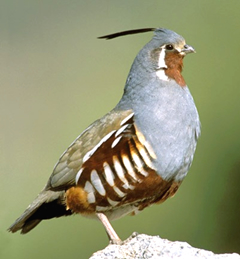 |
| Scissor-tailed Flycatcher |
Around late October, migration starts to wind down here in Central Florida. I have to admit, when I start seeing Yellow-rumped Warblers, I get a little sad. But in reality, November can be quite exciting with some wonderful birding. Temperatures drop a little, so I can bird without sweat, my "warbler neck" heals, and wonderful birds make their presence known around the state. Of course, there are wonderful birds to be seen everywhere in November, so Florida is not unique, but I love late fall in Florida. I'll concentrate on the perching birds I've been able to enjoy in late fall.
Flycatchers
 |
| Eastern Phoebe |
By the time November comes, Eastern Phoebes are here in full force, and their wonderful calls can be heard in most places I visit. These are easily the most common flycatchers we get to enjoy this time of year, but we also get a smattering of other wonderful flycatchers that "belong" farther west but wander over to Florida to delight birders across the state.
 |
| Scissor-tailed Flycatcher |
The first of these that I've been able to see this November is a Scissor-tailed Flycatcher. One has been hanging around the Shiloh area of Merritt Island, and it has been very willing to be photographed.
 |
| Vermilion Flycatcher |
A Vermilion Flycatcher also made an appearance at Orlando Wetlands Park about a half-hour from my home. Unfortunately, the park closed in mid-November, so those that didn't make it there before it closed (like me) will have to hope that it sticks around until it opens again in February. The photo above was taken in February of this year after it spent the winter there last year.
 |
| Say's Phoebe |
There has also been a Say's Phoebe hanging around the west side of Lake Apopka. When I went there to see it, it eventually appeared on top of a pole barn a fair distance away, and that's the only place it would show itself. At first I was frustrated by its uncooperative nature, but now I figure that since it flew way out of its way so that I could drive less than an hour from my home to photograph it, I should stop complaining.
 |
| Ash-throated Flycatcher |
And just this past weekend, I found what I believe to be an Ash-throated Flycatcher on the east side of Lake Apopka. I'm actually not fully convinced of this bird's ID yet. Hopefully it will stick around and let me see it from the front, especially the underside of the tail, this weekend.
 |
| Western Kingbird |
Nov. 30th update. This morning I added a Western Kingbird! It was first seen the day this posted, and I made it out there this morning to find it.
Sparrows
 |
| Clay-colored Sparrow |
Sparrows have been a lot of fun for me this November. Chipping Sparrows start arriving in October. And this year I found my first Clay-colored Sparrow at Mead Gardens about fifteen minutes from my home.
 |
| Savannah Sparrow |
 |
| Swamp Sparrow |
Savannah, Swamp and Song Sparrows also grace us with their presence, much to my delight. To me, there's nothing drab about brown.
 |
| Nelson's Sparrow |
In the Shiloh area of Merritt Island there's a place where Nelson's and Saltmarsh Sparrows are pretty reliable. I had the chance to find both there, though the only photos that turned out were of Nelson's Sparrows. These are quite possibly the prettiest sparrows I've ever seen.
 |
| Grasshopper Sparrow |
Just a couple days ago I went to Lake Jesup, also about 15 minutes from my home, and I was able to get my first photos of a Grasshopper Sparrow. Grasshopper Sparrows certainly could compete with Nelson's Sparrows for the prettiest sparrow I've seen.
 |
| Snow Bunting |
And while not technically a Sparrow, I'll include here a Snow Bunting that decided to make an appearance at the Canaveral National Seashore. It's been hanging around one of the parking lots where people can access the beach. I saw it on Thanksgiving morning when my daughter and I decided to make sandcastles on the beach before dinner. I was there to be a dad, not a photographer, so I didn't try to walk around and get a better angle on the bunting.
Wrens
 |
| Marsh Wren |
Carolina Wrens are here all year-round, but usually sometime in October we start getting House, Marsh and Sedge Wrens. I'm particularly fond of wrens, especially Marsh and Sedge Wrens, and I love hearing them even when I can't see them.
 |
| Sedge Wren |
Nuthatches
 |
| Red-breasted Nuthatch |
We've had Red-breasted Nuthatches showing up in Central Florida in very unusual numbers. It's common to find Brown-headed Nuthatches among the pines here, but Red-breasted Nuthatches have been so fun to find.
 |
| Brown-headed Nuthatch |
So I've decided that I love November birding in Florida. It's about as fun as birding gets for me.
Scott Simmons



















































